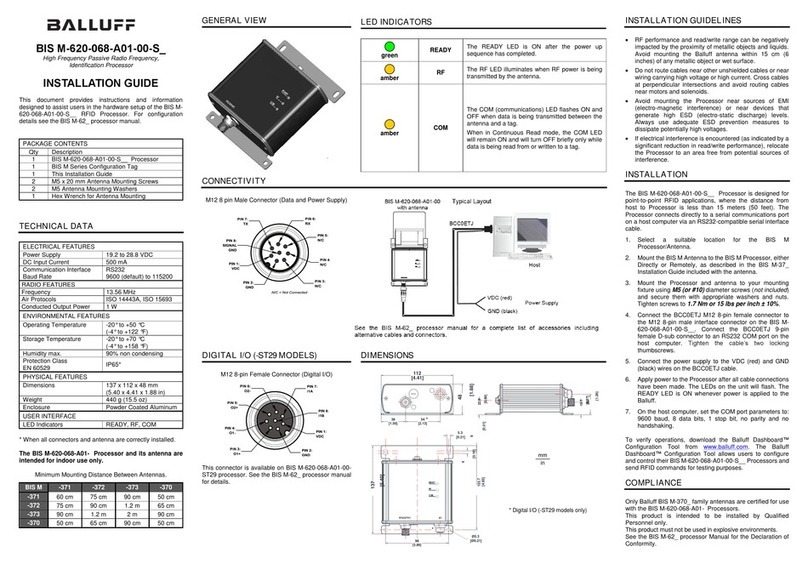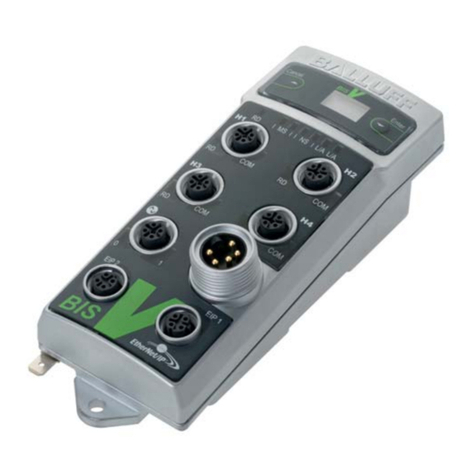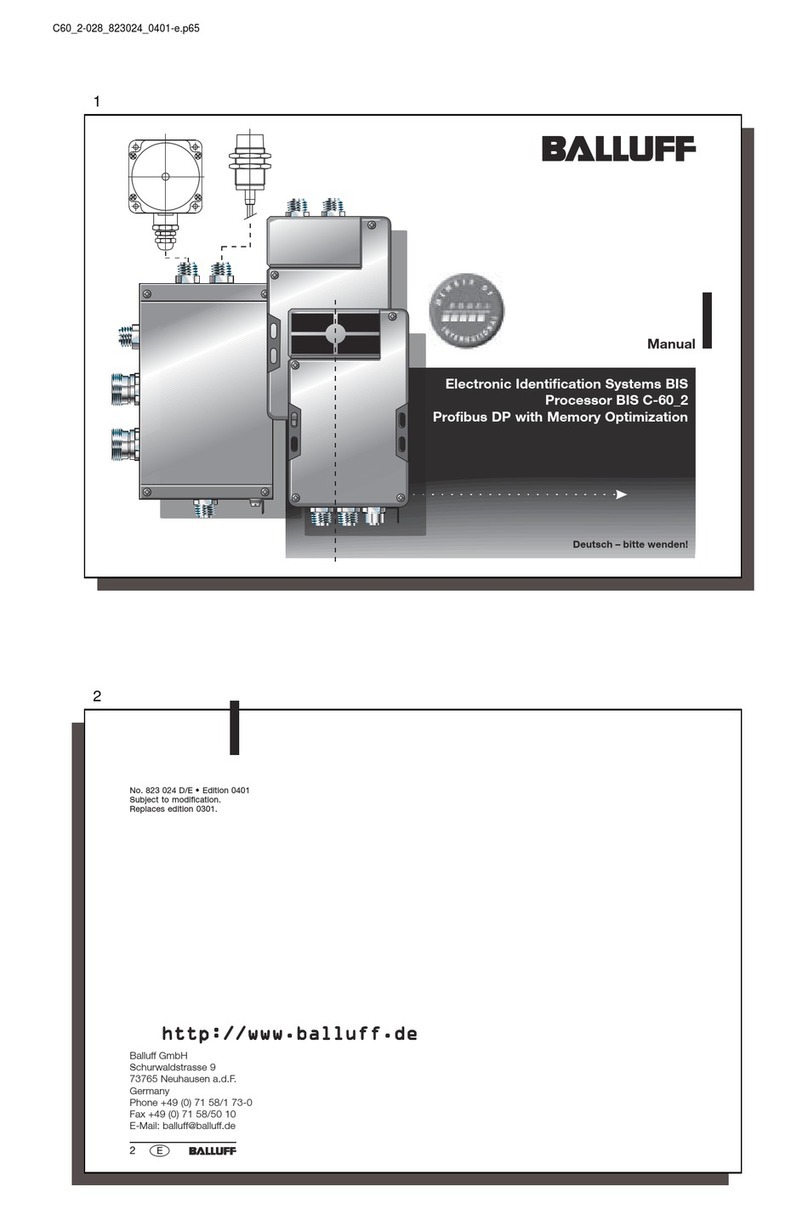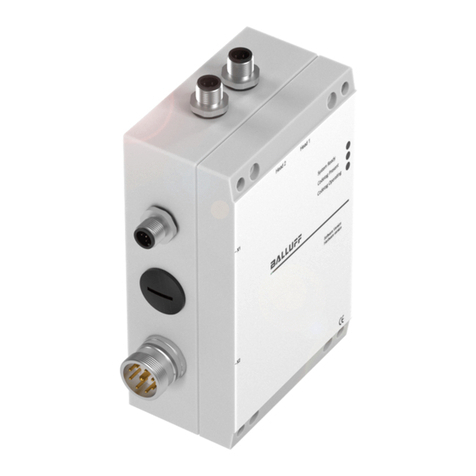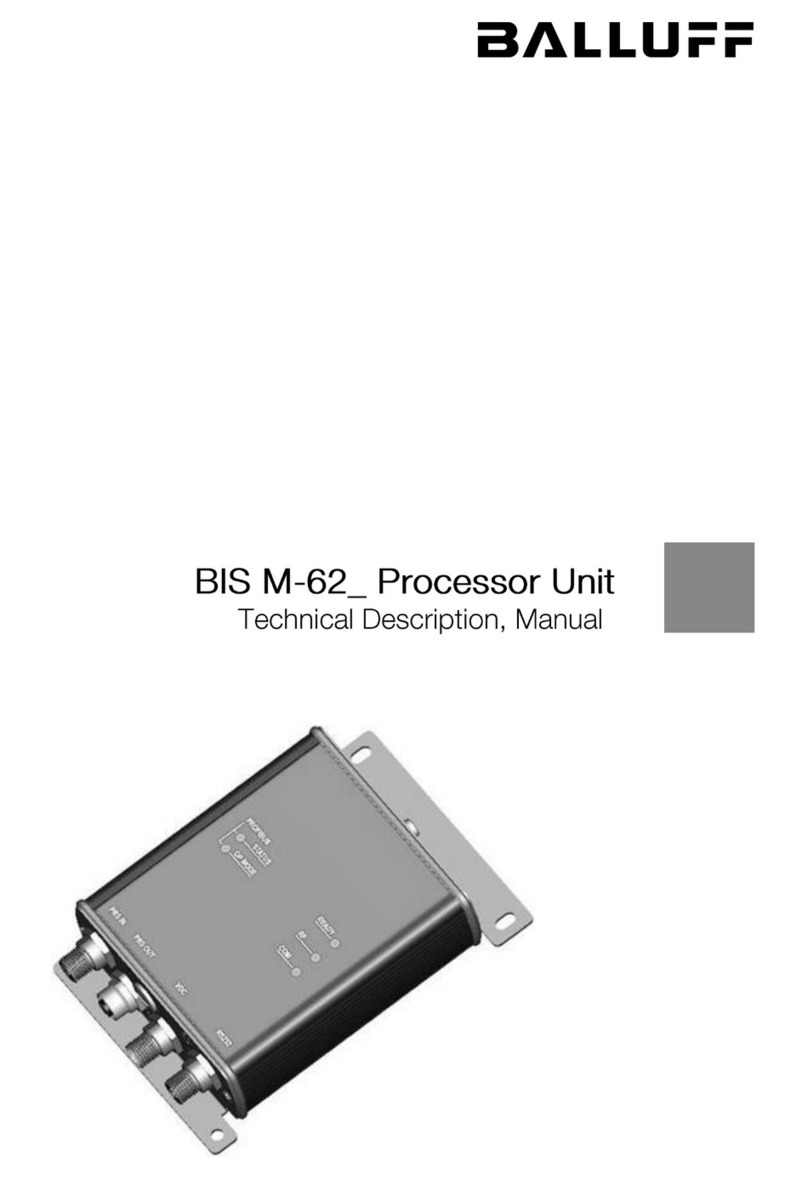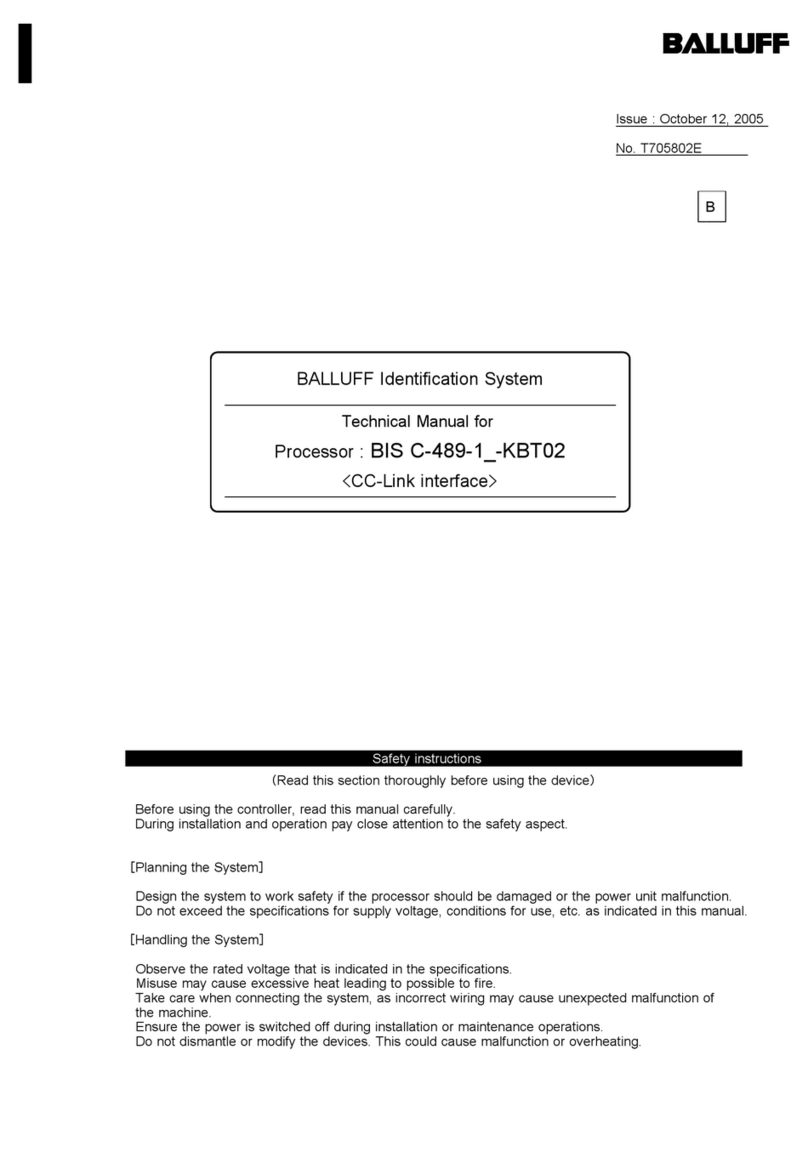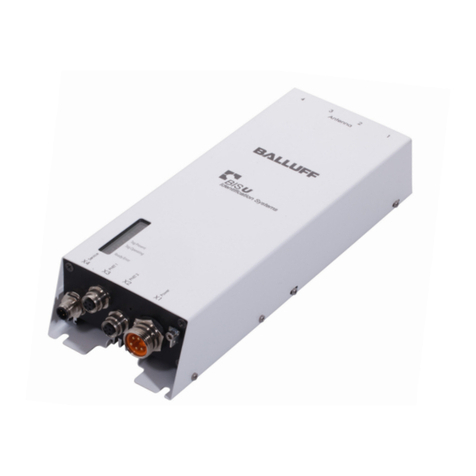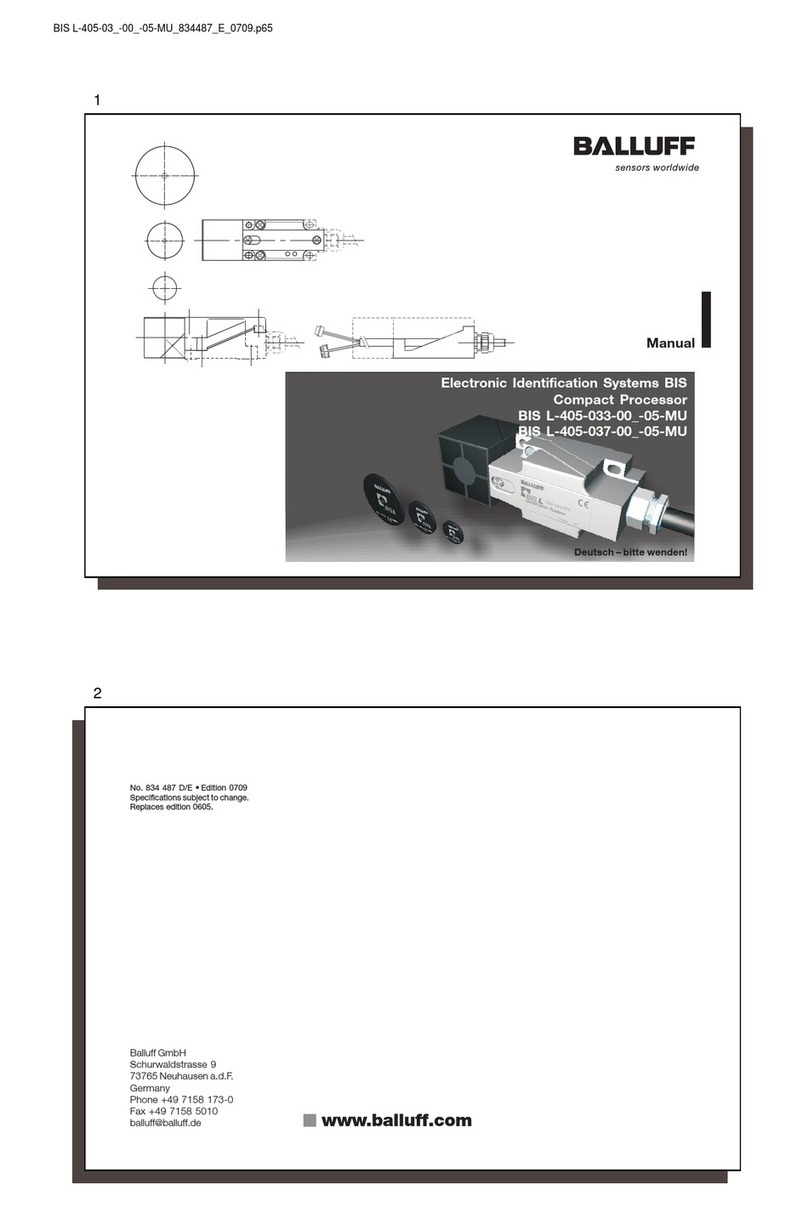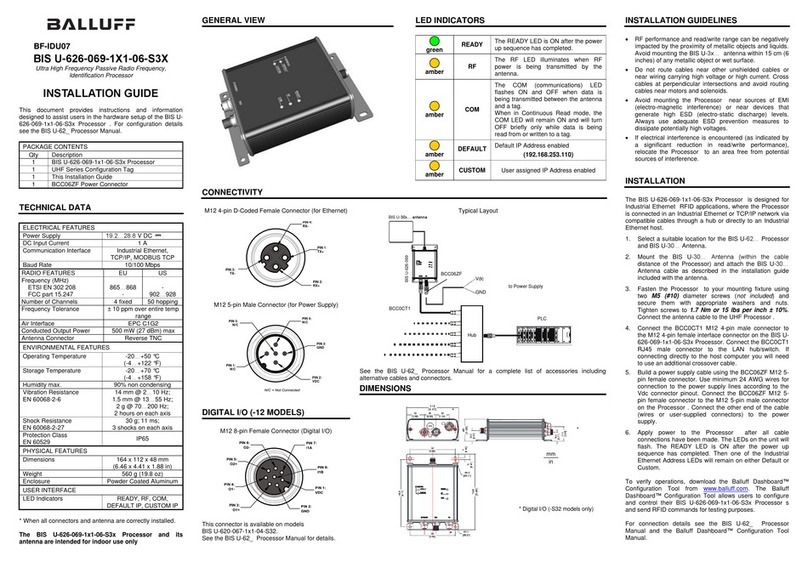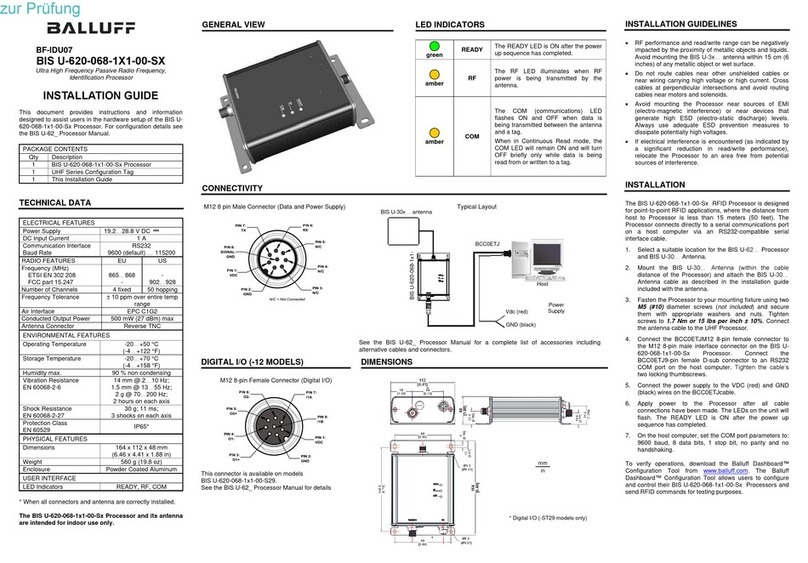3
3
english
Contents
Safety Considerations................................................................................................................. 4
Introduction, BIS C Identification Systems..............................................................................5-7
BIS C-60_2 Processor, Basic knowledge for application ........................................................ 8/9
BUS interface PROFIBUS-DP..............................................................................................10-12
Compatibility with BIS C-6_2 processor .................................................................................. 13
Function Description: Communication with the processor ................................................. 14
Input and Output Buffers ............................................................ 15/16
Output Buffer, configuration and explanation .............................17-20
Input Buffer, configuration and explanation ................................ 21-24
Parametering the BIS C-60_2 processor................................... 25-28
Processing data carriers ............................................................ 29-35
Examples for protocol sequence .............................................. 36-53
Read/Write Times ............................................................................................................... 54/55
LED Display ............................................................................................................................. 56
BIS C-6002 BIS C-6022
Mounting Head / Processor ..............................................................................57 .................. 75
Opening the Processor .....................................................................................58 .................. 76
Installing the connection cables / Mounting the PG connection .............. 59/60
Interface information / Wiring Diagrams ..................................................... 61-68 ............. 77-80
Changing the EEPROM .....................................................................................69 .................. 81
Technical Data ............................................................................................. 70-72 ............. 82/83
Ordering Information: Ordering Code / Accessory .................................... 73/74 .................. 84
Appendix, ASCII Table ............................................................................................................. 85
C60_2-019_818217_0806-e.p65
4
english4
Safety Considerations
Series BIS C-60_2 processors along with the other BIS C system components comprise an
identification system and may only be used for this purpose in an industrial environment in
conformity with Class A of the EMC Law.
Installation and operation should be carried out by trained personnel only. Unauthorized work
and improper use will void the warranty and liability.
When installing the processor, follow the chapters containing the wiring diagrams closely.
Special care is required when connecting the processor to external controllers, in particular
with respect to selection and polarity of the signals and power supply.
Only approved power supplies may be used for powering the processor. See chapter 'Techni-
cal Data' for details.
Prevailing safety regulations must be adhered to when using the identification system. In par-
ticular, steps must be taken to ensure that a failure of or defect in the identification system
does not result in hazards to persons or equipment.
This includes maintaining the specified ambient conditions and regular testing for functionality
of the identification system including all its associated components.
Should there ever be indications that the identification system is not working properly, it
should be taken out of commission and secured from unauthorized use.
This manual applies to processors in the series BIS C-6002-019-...-03-... and
BIS C-6022-019-050-03-....
Installation and
Operation
Use and Checking
Fault Conditions
Scope
Approved Operation
